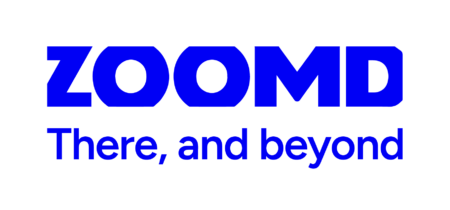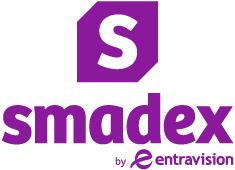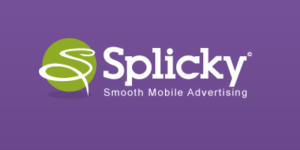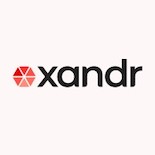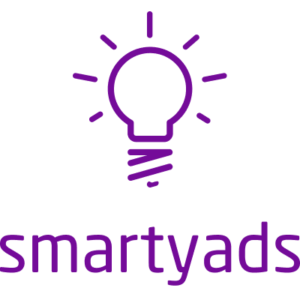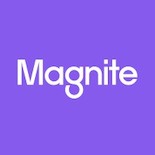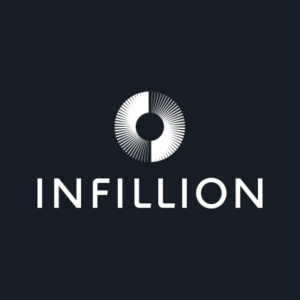Rich media ads are dynamic, interactive advertisements that go beyond traditional banner or text ads, offering a more immersive experience for users. These ads can include video, audio, and interactive elements that engage audiences more deeply, making them an effective tool for both advertisers and app owners.
By capturing user attention with rich, multimedia content, rich media ads are known to boost engagement rates and drive better performance metrics than standard ads.
For advertisers, the benefits of rich media ads lie in their ability to tell more compelling stories and showcase products in a visually impactful way.
The interactive nature of these ads often leads to higher click-through rates (CTR) and conversions, as users are more likely to engage with content that feels personalized and engaging.
For app owners, rich media ads provide a way to monetize their platform without sacrificing user experience, as the format allows for creative, non-intrusive placements.
This guide will explore the various benefits of using rich media ads for both advertisers and app owners, offering insights into how to maximize their potential.
We will also provide a curated list of the top rich media ad networks to help advertisers select the best ad network for their campaigns, ensuring they reach the right audiences with the most effective tools.
Featured Rich Media Ad Networks
What is rich media?
Rich media is a term that covers a wide range of digital ads designed to be more engaging and interactive than standard banner or text ads. Unlike simple static ads, rich media ads can include elements like video, audio, animations, or even interactive features that invite users to click, hover, or explore. They offer a richer, more immersive experience, which naturally makes them stand out more.
The big advantage of rich media ads is that they create more opportunities for users to interact with the content.
Since they can include multiple layers of multimedia elements, advertisers have a lot more room to play with in terms of creativity and messaging. This makes it easier to capture attention and keep users engaged compared to a simple banner ad or a block of text.
One thing to note is that rich media ads tend to be larger in file size—often more than 200K—which means they may take up more bandwidth than traditional ads.
This extra size comes from the inclusion of multimedia components, like videos or animations, that require additional files to run smoothly. Because of this, these ads can expand or transform in different ways when a user interacts with them, adding to their dynamic nature.
Rich media ads are designed to provide an engaging and interactive experience, making them a popular choice for brands looking to make a lasting impression.
The ability to combine different elements and offer users a more involved experience gives advertisers a powerful tool to stand out in the crowded digital advertising space.
What are the different types of rich media ads?
When it comes to digital advertising, there’s a clear difference between standard ads and rich media ads. Standard ads, like basic banners or text ads, typically feature simple content with limited interactivity.
Rich media ads, on the other hand, are much more dynamic, allowing for more creative elements like video, audio, animations, and interactive features. Let’s take a look at the different types of rich media ads and how they compare to more traditional formats.
Rich media ads vs. standard ads
Standard ads are usually static and rely on basic images or text to convey a message. They’re lightweight in terms of file size, load quickly, and are easy to produce, making them a cost-effective option for many advertisers.
However, they’re limited in what they can achieve in terms of engagement. Users can see them, but there’s usually little to interact with, which can lead to lower engagement and click-through rates.
Rich media ads, by contrast, offer a far more engaging experience. These ads can include multiple layers of content, such as videos, audio clips, animations, and clickable elements. While they’re larger in file size and may require more effort to create, they’re also much more effective at capturing user attention and driving interaction.
The key difference is that rich media ads actively encourage users to engage with the content, which can lead to better performance and higher returns.
Expanding ads
Expanding ads are one of the most popular types of rich media ads. They start as a smaller, static banner but expand to a larger format when a user clicks on or hovers over the ad. This allows advertisers to grab attention without being overly intrusive, offering a quick, subtle way to engage users initially and then providing more detailed content once interaction is established.
These ads are particularly useful for campaigns that require more space to tell a story or showcase a product. For example, an expanding ad could start with a simple image but then grow to reveal a video or interactive feature once the user engages with it. This provides a balance between delivering a non-intrusive ad experience while still offering rich, immersive content.
Video ads
Video ads are another powerful type of rich media. These ads use video content to engage users in a more visual and storytelling-driven way. Video ads can be embedded directly into a webpage or app, or they can appear as part of an interactive ad unit that users can click to play.
This format is especially effective for driving brand awareness, as video content tends to be more memorable and shareable than static images or text.
With the increasing consumption of video content online, video ads are an excellent choice for advertisers looking to capitalize on user preferences.
Unlike standard video ads that play passively, rich media video ads often offer interactive elements, like clickable call-to-action buttons or product showcases within the video, enhancing engagement and driving further action.
Interactive ads
Interactive ads take user engagement to the next level by incorporating elements that encourage direct interaction. These ads might feature clickable elements, quizzes, polls, or even games that users can play right within the ad itself.
The goal is to create a more involved experience that allows users to actively participate rather than just passively viewing the ad.
Because they require users to take action, interactive ads tend to be more memorable and effective at driving engagement. They’re also great for collecting data, as you can track exactly how users interact with different elements of the ad.
This makes interactive ads a versatile option for advertisers looking to boost engagement and gather valuable insights on user behavior.
Floating ads
Floating ads, also known as overlay ads, appear on top of the website or app content and move across the screen, often following the user’s scroll or mouse movements. These ads are typically used to capture immediate attention since they’re hard to miss.
Floating ads can include animations, videos, or interactive elements, making them a powerful tool for driving engagement.
The key benefit of floating ads is their ability to grab attention without being confined to a specific part of the webpage or app. While they can be seen as more intrusive, if done correctly, they offer an engaging way to present content that users are likely to notice.
However, because they float over content, it’s important to strike a balance between visibility and user experience to avoid frustrating the audience.
What are the benefits of rich media?
Rich media ads offer a range of exciting benefits for advertisers looking to engage their audiences in more dynamic ways. With their ability to incorporate interactive elements like video, audio, and animation, these ads stand out compared to standard text-based or static ads.
In this section, we’ll dive into the key advantages of rich media advertising, as well as some potential drawbacks to consider.
Variety & flexibility
One of the biggest benefits of rich media ads is the sheer variety of options they offer. Unlike basic text-based ads, rich media can include elements like video, animations, audio, and even interactive features. This means advertisers have the freedom to create more dynamic and engaging content that speaks to their audience in a way traditional ads can’t.
With the rise of online video consumption, tapping into this format gives brands a way to connect with users through a medium they’re already enjoying.
Additionally, there’s a lot more creative space to work with in a rich media ad. You can combine multiple features—like a video with a call-to-action button, display photos, and even sound effects—to really make your campaign pop.
This flexibility allows advertisers to design unique and eye-catching campaigns that stand out from the crowd.
Increased tracking & insights
Another huge benefit of rich media ads is the advanced tracking capabilities they provide. Advertisers can gather in-depth performance data, such as how many people interacted with the ad, how long they engaged, and what actions they took afterward.
This level of insight makes it easier to fine-tune campaigns, optimize performance, and ensure your investment is paying off.
By offering multiple ways to track engagement, rich media ads give advertisers a clearer picture of what’s working and what isn’t. Whether it’s measuring click-through rates (CTRs), video views, or user interactions, you’ll have a wealth of data to help make informed decisions about future campaigns.
Better engagement & brand awareness
Rich media ads are highly effective when it comes to engaging users and raising brand awareness. Thanks to their interactive and immersive elements, they tend to have higher click-through rates than traditional ads, meaning more people are likely to engage with your message.
This is especially useful for advertisers trying to make a lasting impression or boost brand recognition.
Because of their versatility, these ads can be tailored to resonate with different age groups or audience segments, ensuring that your message reaches the right people.
When done correctly, rich media ads create memorable experiences that stick with users long after they’ve seen them.
What are the challenges of rich media?
While rich media ads offer a lot of advantages, they aren’t without their downsides.
For one, they require more effort to create. Designing a compelling, interactive ad takes time and resources, which might be a challenge for smaller teams or brands with limited budgets.
Another issue is that these ads can be blocked or skipped by users who find them intrusive or annoying. And because they tend to be larger in file size, they can take longer to load, especially for users with slower internet connections.
This means you’ll need to consider the user experience carefully to avoid frustration.
What are the best practices of rich media?
Rich media ads are highly effective, but to make the most out of them, advertisers need to follow certain best practices. These ads are more complex than standard formats, offering multiple layers of content and interaction points, which means there’s more to consider when creating and optimizing them.
In this section, we’ll explore some of the best practices to ensure your rich media ads perform at their best and provide a great user experience.
Keep the user experience in mind
The most important thing to consider when designing rich media ads is the user experience. While rich media allows for interactive and engaging content, it’s essential to strike a balance between capturing attention and being respectful of the user’s time and space.
Ads that are too intrusive or overwhelming can frustrate users and drive them away, leading to negative brand impressions. Make sure your ads are easy to interact with and don’t disrupt the user’s browsing experience.
For example, if you’re using expanding or floating ads, make sure they have clear close buttons so users can easily exit the ad if they’re not interested. Keeping the ad experience smooth and unobtrusive helps maintain positive engagement without alienating your audience.
Optimize for faster load times
Rich media ads often include larger file sizes because of the multimedia content they contain, such as videos and animations. However, if these ads take too long to load, you risk losing the audience before they even see the content. Slow load times can lead to poor user experience, high bounce rates, and wasted ad spend, so it’s crucial to optimize your rich media ads for speed.
To ensure fast load times, compress files where possible and use efficient coding practices. You should also test your ads on different devices and internet speeds to make sure they load quickly across all user environments.
Lightweight, fast-loading ads will not only perform better but will also reduce the likelihood of users getting frustrated and leaving your site or app.
Focus on mobile responsiveness
As more users access content via mobile devices, it’s critical that your rich media ads are mobile-responsive. A rich media ad that looks great on a desktop might not perform well on mobile if it’s not properly optimized.
Mobile responsiveness means that your ads should adjust seamlessly to different screen sizes and orientations, ensuring a smooth user experience across all devices.
Make sure your ads are touch-friendly and that interactive elements work well with finger taps rather than just mouse clicks. It’s also essential to keep mobile load times in mind, as mobile users may have slower internet connections compared to desktop users.
By designing ads with mobile-first principles, you’ll increase engagement and reach a broader audience effectively.
Provide clear CTAs
In any type of digital ad, but especially with rich media, having a clear and compelling call to action (CTA) is key to driving conversions. Whether it’s a button to “Shop Now,” “Learn More,” or “Sign Up,” your CTA should stand out and make it obvious what action you want users to take.
Since rich media ads often contain multiple interactive elements, it’s important not to confuse or overwhelm the user with too many options.
Ensure your CTA is visible and straightforward, and place it strategically within the ad so that it’s easy to find. You can also experiment with different formats, like clickable buttons or interactive hotspots, to encourage user interaction.
A strong, well-placed CTA will help drive users to take the next step and increase the overall effectiveness of your ad campaign.
Use tracking & analytics to optimize
One of the advantages of rich media ads is the depth of tracking and analytics they provide. However, gathering data is only useful if you’re actively using it to optimize your campaigns.
Monitor performance metrics closely, such as click-through rates, interaction rates, and video completion rates, to understand how users are engaging with your ad.
Based on the data you collect, make adjustments to improve performance. For instance, if you notice that users are dropping off at a particular point in an interactive ad, you can tweak that element to make it more engaging.
Continuous optimization through analytics will ensure your rich media ads are delivering the best possible results over time.
Rich media eCPMs
Here are some of the biggest Rich Media ads offers along with their platform, rates and country.
| Platform/Network | Country | eCPMs/Revenues |
|---|---|---|
| Admob | UK | Around $10 for Android and $17 for iOS |
| Admob | US | Around $11 and iOS is around $16 |
| Admob | Japan | Android is around $14 and iOS is around $22 |
| Appodeal | US | Average at: $6.27 |
| Appodeal | Worldwide | Average at: $5.08 |
Source: Blognife
What do rich media ad networks do?
Rich media ad networks play a crucial role in the delivery and management of rich media ads. These networks provide the platforms and tools necessary for advertisers to create, distribute, and track rich media ads across various websites, apps, and digital channels.
They act as intermediaries, helping brands reach the right audience while offering advanced analytics and optimization features to ensure campaigns perform well.
Ad creation & distribution
One of the primary functions of rich media ad networks is providing tools for ad creation. These networks often come with user-friendly interfaces or templates that make it easy for advertisers to design interactive and multimedia-rich ads.
They support the integration of various elements such as video, audio, animations, and clickable features, allowing for creative and engaging ad experiences without requiring in-depth technical skills.
Once the ad is created, the ad network helps distribute it across a wide range of websites, apps, and platforms. They often have partnerships with publishers, ensuring that the ads appear in premium placements and reach the right audiences.
By leveraging the network’s reach, advertisers can display their rich media ads to a larger, more targeted audience, enhancing the chances of engagement and conversion.
Campaign management & targeting
Rich media ad networks also offer powerful campaign management tools, allowing advertisers to control where, when, and to whom their ads are shown.
Through these platforms, advertisers can set parameters like demographic targeting, geographic location, and even specific behaviors or interests. This level of targeting ensures that rich media ads are delivered to users who are most likely to engage with them, making campaigns more effective.
Additionally, ad networks provide real-time management tools that allow advertisers to make adjustments mid-campaign. Whether it’s tweaking an interactive element or shifting the focus to a more responsive demographic, these networks enable advertisers to stay flexible and optimize their campaigns for maximum impact.
Performance tracking & analytics
Another critical function of rich media ad networks is offering robust analytics and performance tracking. Because rich media ads are more interactive, there are multiple touchpoints to measure, from video views to clicks, hover rates, and other forms of user engagement.
Ad networks provide detailed reports that give advertisers insights into how their ads are performing and what elements are driving the most interaction.
With these analytics, advertisers can track their return on investment (ROI) and make data-driven decisions for future campaigns.
The ability to measure the effectiveness of different creative elements, targeting strategies, and placements makes rich media ad networks invaluable for optimizing ad performance and ensuring that brands are getting the most from their marketing budgets.
Work with rich media ad networks
Rich media ads offer advertisers a powerful way to create more engaging and interactive campaigns that capture attention and drive better results than standard ads.
By incorporating elements like video, audio, and interactive features, these ads can boost user engagement, increase brand awareness, and improve click-through rates.
As online content consumption continues to evolve, rich media ads are becoming a crucial tool for advertisers looking to stand out in the digital landscape.
To make the most of rich media ads, advertisers should focus on key best practices. Prioritizing user experience, optimizing for fast load times, and ensuring mobile responsiveness are essential for creating ads that resonate with audiences.
Clear calls to action and using performance tracking to optimize campaigns are also vital steps for ensuring rich media ads deliver maximum impact.
Now that you understand the benefits and strategies for success, the next step is choosing the right platform.
Below, you’ll find a carefully selected list of the top rich media ad networks, providing the tools and reach you need to make your next campaign a success.





